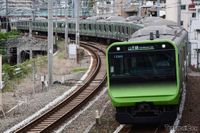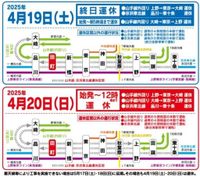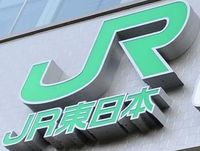JR East is set to implement significant service changes on the Yamanote and Keihin-Tohoku Lines due to planned construction work associated with the development of the new Haneda Airport Access Line. This construction will lead to the suspension of services on certain segments of both lines from the first train on April 19, 2025, until approximately noon on April 20, 2025.
The specific areas affected include the outer loop of the Yamanote Line, which runs between Ueno, Tokyo, and Osaki, as well as the Keihin-Tohoku Line between Higashi-Jujo and Shinagawa. Additionally, on April 20, the inner loop of the Yamanote Line will also experience service suspensions between Osaki, Tokyo, and Ueno.
As a result of these changes, passengers will not be able to travel the shortest route on JR lines between Ueno and Shinagawa on April 19, excluding stations on the Ueno-Tokyo Line and the Chuo Line between Tokyo and Kanda. Furthermore, during the suspension period from the first train until noon on April 20, there will be no JR trains stopping at Okachimachi, Yurakucho, Hamamatsucho, and Tamachi stations.
In terms of service frequency, the Yamanote Line will be operating at reduced capacity. On April 19, while the inner loop will not have suspended sections, the intervals between trains from Osaki to Tokyo and Ueno will be approximately 3 to 6 minutes, compared to the usual 4-minute intervals on weekends. Additionally, trains bound for Osaki will be added between Ueno and Ikebukuro, operating approximately every 2 to 4 minutes. For the outer loop, which is not suspended, service will run approximately every 10 minutes.
On April 20, the Yamanote Line will operate between Osaki and Ikebukuro, and Osaki and Ikebukuro and Ueno until noon, with the outer loop running approximately every 4 to 10 minutes and the inner loop every 5 to 10 minutes.
The Keihin-Tohoku Line will also see some timetable changes outside of the suspended sections. For example, service between Omiya and Higashi-Jujo will operate at about 60% to 80% of the normal frequency, while the segment between Shinagawa and Kamata will operate at about 70%. Notably, both days will see the suspension of rapid services, and after service resumes on April 20 between Ueno and Shinagawa, all trains will operate as local trains stopping at each station.
To mitigate the impact of these service disruptions, JR East plans to increase the number of trains on some other lines. For instance, extra trains will run on the Ueno-Tokyo Line between Shinagawa and Ueno, with some trains departing from Omiya Station. Additionally, on April 19, extra trains will run on the Saikyo Line between Osaki and Musashi-Urawa.
JR East is also coordinating with other transportation providers such as Tokyo Metro, Toei Subway, Tobu, and Keikyu to offer substitute transportation options. This arrangement allows users with passes, commuter passes, and coupon tickets for the suspended sections to utilize pre-determined lines of other companies. However, it is important to note that IC card tickets like "Suica" and "PASMO" cannot be used for substitute rides unless they are within the designated areas, and users will need to pay the fare for the actual sections traveled.
The Haneda Airport Access Line, which is the focus of this construction work, is designed to provide a direct connection to Haneda Airport, allowing passengers to board directly below the airport terminal and connect to the Yamanote Line and the waterfront area. Currently, construction is ongoing for both the East Yamanote Route and the Access New Line, which aim to connect Tokyo Station directly to Haneda Airport.
The East Yamanote Route is planned to branch off from the Tokaido Line near Tamachi Station, necessitating the relocation of a portion of the line to insert the new line. As part of this project, JR East will shift the outer loop of the Yamanote Line and the southbound track of the Keihin-Tohoku Line to the west, creating the necessary space for the Tokaido Line's upward track relocation.
This construction is a critical step in enhancing connectivity to Haneda Airport, ensuring that the new access line can effectively serve the growing number of travelers. As JR East continues to develop this infrastructure, they are committed to minimizing disruptions and providing alternative travel options for commuters and travelers alike.
In summary, the upcoming service changes on the Yamanote and Keihin-Tohoku Lines are part of a broader initiative to improve access to Haneda Airport. While these temporary service suspensions may cause inconvenience, they are essential for the future of transportation in the region, ensuring that passengers can enjoy a seamless travel experience.








